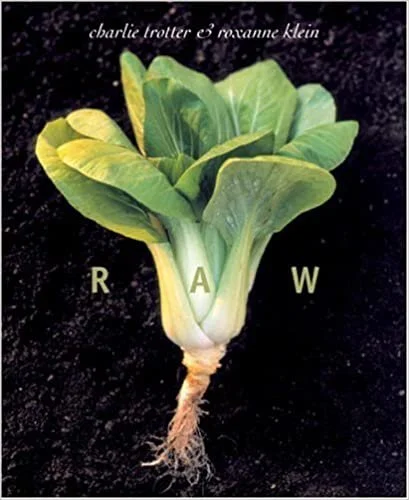There's nothing better than a ripe tomato fresh off the vine. Cucumbers, too, are most delicious peeled and sliced in the hands that picked them. And there's no way to improve on raw apples or berries or melons... unless it's mid-December and there's a foot of snow on the garden.
Some folks have discovered that many foods can be eaten raw and they're awfully excited. In urban America there's a new movement being dished up that advocates eating uncooked meals whenever possible. It's a radical idea, promoted by advocates who say the nutritional value of raw food is higher than cooked or processed foods and that their natural enzymes, critical to digestion, have not been destroyed.
There are others, of course, who say that this is bunk, but that hasn't slowed the movement or stifled the appetites of raw-foodists for unadulterated consumption.
The raw-food diet, which may eventually challenge the Atkins Diet for media attention, is made up of fruits, vegetables, nuts and seeds that have never been warmed above 116 degrees. Strict observers of the diet refuse all meat, poultry and dairy products and claim that eating raw foods gives them more energy, clearer skin, and a detoxified body free of cancer, arthritis and allergies. There's no way to argue with success when the success is inarguable.
Roxanne Klein, a leading chef in the raw-foods movement and co-author of the cookbook "Raw," explains: "I love the sensual experience of eating foods in their natural state, and I love the way eating them makes me feel."
I know what she means. Nothing tastes as good or makes me feel better than fresh-picked raspberries or wild huckleberries. I welcome raw walnuts, almonds, chestnuts, cherries, celery, carrots, peaches, kiwis, oranges, bananas, snow peas and dozens of other foods. Dried fruits like dates, raisins and figs are great as well.
But a raw potato is no treat, nor will I sink my teeth into a fresh-picked squash or eggplant. I'd rather have my onions sauteed, thank you, and I don't really consider beets edible under any circumstances.
These are personal preferences, certainly, and raw-foodists obviously have them as well, but what strikes me about the raw-food diet is that in order to be practical it requires not only a powerful blender, but also a semi-tropical climate and better grocers than we have around here. There's not much harvested in these northern climes between October and May, so anything "raw" must either store well or be trucked in from outside, and it's well known that produce begins to lose nutrients and phytochemicals as soon as it's picked. Wait too long and any produce will lose its appeal, nutritionally or otherwise.
Like those folks who advocate eating only locally produced foods, the raw-food purists would limit us either to a primal diet of bitter roots and small grains for the winter months or a six-month sabbatical in Hawaii.
Klein and her Raw co-author, Charlie Trotter of the restaurant Charlie Trotter’s in Chicago, have recognized that in the real world raw foods will not be consumed unless tastefully presented and artfully flavored. They have elevated raw-food cuisine to its heights with a landmark collection of over 100 recipes, splendidly illustrated and accompanied by assembly instructions and wine notes.
Their entrees include "Bleeding Heart Radish Ravioli with Yellow Tomato Sauce" and "Stuffed Squash Blossoms with Curried Parsnip Puree and Tobacco Onions." Tobacco Onions? Try asking for that at your local IGA!
And then for dessert we have "Fig Napoleon with Honey Pastry Cream and Basil" or "Watermelon Soup with Sharlyn Melon Granite and Micro Mint."
It's hard to image what any of these dishes would look or taste like, but they are all prepared with uncooked ingredients without the use of a stove or microwave or any other nutrient-destroying heat source. They demand ingredients and time-consuming techniques unfamiliar and unavailable to many chefs and most home-based gourmets, but they are neverthless inspirational, healthy and worthy of our admiration and emulation.
